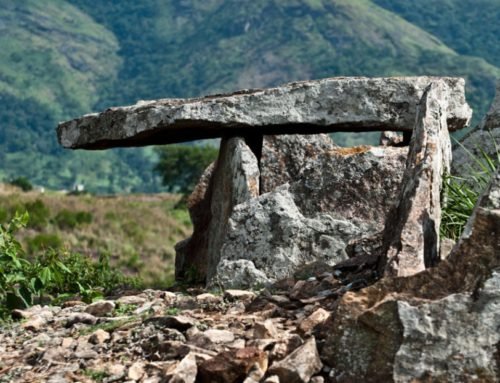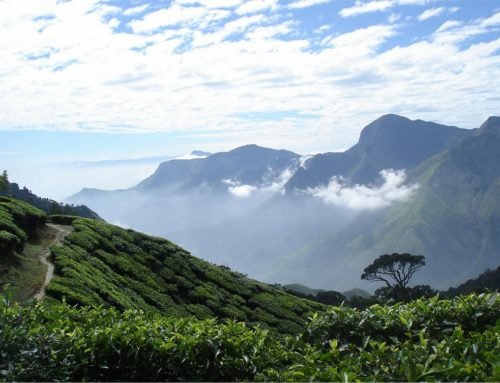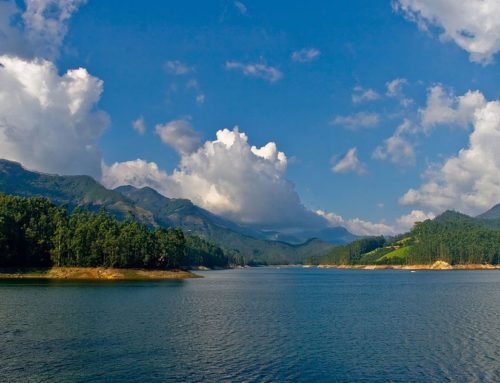Overview
- Features: Chance to see Nilgiri tahr in an idyllic mountain setting
- Opening Times: 7am to 6pm, daily
- Best Time to Visit: September to December
- Duration: 2 to 3 hours
- Travelled By: Bus
- Cost: Indian/foreigner Rs 65/200
- Address: Munnar Post, Idukki Valparai-Gundumalai Trail Road, Kannan Devan Hills, Kerala, India
- Type: National Park, wildlife
Author Reviews[display_rating_item_results rating_form_id=”2″ rating_entry_ids=”1″ show_category_filter=”false” show_options=”true” result_type=”star_rating” preserve_max_rating=”true” show_title=”false” show_count=”false” ]
Total Rating: [display_rating_result rating_form_id=”2″ show_count=”false” show_rich_snippets=true] [accordions load=”1″] [accordion title=”User Reviews” last] [display_rating_item_results rating_form_id=”5″ show_options=”true” result_type=”star_rating” preserve_max_rating=”true” show_title=”false” show_count=”true” show_rich_snippets=true] [/accordion] [accordion title=”Add Review”][display_rating_form show_email_input=”true” show_comment_textarea=”true” show_name_input=”true” rating_form_id=”5″] [/accordion] [/accordions]
Summary
At the base of the Anaimudi Mountain, 16 km from Munnar, Eravikulam National Park is home to the endangered Nilgiri tahr. Its conservation program has resulted in the park now supporting the largest population of the species in the world. The national park stands out for the stark beauty of its rolling grasslands and sholas.
Eravikulam National Park Munnar
The rolling high-altitude grasslands, a striking contrast to the dense sholas or tropical montane forests of the valleys, are unique to the mountain landscape of the Western Ghats. Easily the best preserved stretch of this extraordinarily beautiful landscape is the Eravikulam National Park (also known as Rajamalai National Park), spread across an area of 97 sq km (38 sq miles) at the base of the Anaimudi Mountain, 16 km from Munnar. At a height of 2,695 m (8,842 ft), this has the distinction of the being the highest peak south of the Himalayas. Anaimudi, which means “Elephant Head”, not surprisingly resembles one. The peak and its environs provide good hiking territory.
[singlepic id=1054 w=720 h=560 float=center]
[singlepic id=1048 w=720 h=560 float=center]
The park, on the border of Kerala and Tamil Nadu, was established in 1978 with the specific aim of conserving the endangered Nilgiri tahr (Nilgiri ibex), a rare breed of mountain goat. Before becoming a national park, the area was the hunting reserve of the colonial tea planters. Today, the park is home to about 3,000 tahr, the single largest population of this slate-grey goat in the world. Extremely agile, these sure-footed wild goats live in herds on the steep black rocky slopes of the Anaimudi mountains, and can be observed at surprisingly close quarters due to their rather tame nature. They are brownish in colour, have short, flat horns with the male carrying a thick mane, and can be easily seen around the park entrance.
The park is also home to elephants, sambars, gaurs, macaques and the occasional leopard and tiger, as well as packs of dhole, the rare Indian wild dog. Its streams contain trout, and there are also more than 90 species of birds, including song birds such as the laughing thrush.
[singlepic id=1051 w=720 h=560 float=center]
[singlepic id=1053 w=720 h=560 float=center]
Eravikulam National Park stands out for the stark beauty of its rolling grasslands and sholas, spread over 97 sq km in the Kannan Devan Hills. Anamudi stands majestically in the core area of the national park. It is an ideal place to see the biodiversity of the high elevation shola-grassland ecosystem. The slopes of the hills abound in many kinds of rare flora which include rare terrestrial and epiphytic orchids, and beautiful wild balsams.
[singlepic id=1052 w=720 h=560 float=center]
A protected area, the sanctuary is divided into three regions – the core area, the buffer area and the tourism area. Visitors are allowed only to the tourism area – Rajamalai – the region lying beyond the entry into the national park. There is an easy paved path from the park entrance following the road immediately below the bare granite outcrop of the Naikundi Hill to the Rajamalai Gap. At the end of the paved road you can observe the Nilgiri tahr at close quarters. At the start of the track, there is a very informative interpretation centre about the conservation efforts of the park and biodiversity of the shoal-grassland ecosystem.
[singlepic id=1047 w=720 h=560 float=center]
Eravikulam is regarded as one of the best-managed national parks in the country. The Muduvan tribals, who live at the periphery of the park, are employed to assist in its conservation. Their traditional method of selectively burning parts of the grassland prevents large forest fires, and also helps regenerate the tender grass on which young tahr feed.
Eravikulam is also famous for the kurunji (Strobilanthes kunthianus), the blue flowers that suddenly bloom en masse every 12 years and transform the rocky landscape into a sea of blue. The kuruji is next expected to bloom in 2018.
Eravikulam National Park is usually closed at the time of calving of the Nilgiri tahrs which usually takes place during the early months of the year.
Getting to & from Eravikulam National Park
[singlepic id=1049 w=720 h=560 float=center]
Public buses run the distance between Munnar town and Eravikulum National Park and will drop you right in front of the entrance gate to the ticket booking counter. From there a national park bus will take you the final 4 km from the checkpoint to the entrance of the national park.







